Comet Neowise started to put on a show for viewers from Earth in the pre-dawn hours starting around July 5. But, the moon was a bit problematic, and who wants to get up at 3 a.m., right? I hiked up a hill in Moorpark, California, on Tuesday (July 14) evening to try my luck as the comet was now visible in the mid-late evening sky to the northwest. As the sky darkened and as the Big Dipper appeared towards the NW-NNW, I tried to see if I could see the comet. I could not. The sky was pretty dark in that direction, but there was some marine layer haze, and the comet was very close to the horizon. I pointed one of my cameras (the one with the 50mm lens attached) to the NW and took a shot. There it is! I could easily see it on the camera LCD screen, but still could not see it visually. Oh well.
I pointed my other camera and its 70-200mm lens towards the area with the comet, and started taking a bunch of photos. the best ones were at about 115-185mm focal length, at f2.8, ISO 2000 to 4000, and exposure times of 4-8 seconds. The marine haze gave it a bit of a orange/reddish hue. The images below are in reverse chronological order, as the comet set behind the Topatopa Mountains around 9:45 p.m. I was surprised at how well the images turned out, given that I could not even see it! If you find a dark spot and have good eyesight, you should be able to see it in the evening sky towards the NW this week (July 15-22).

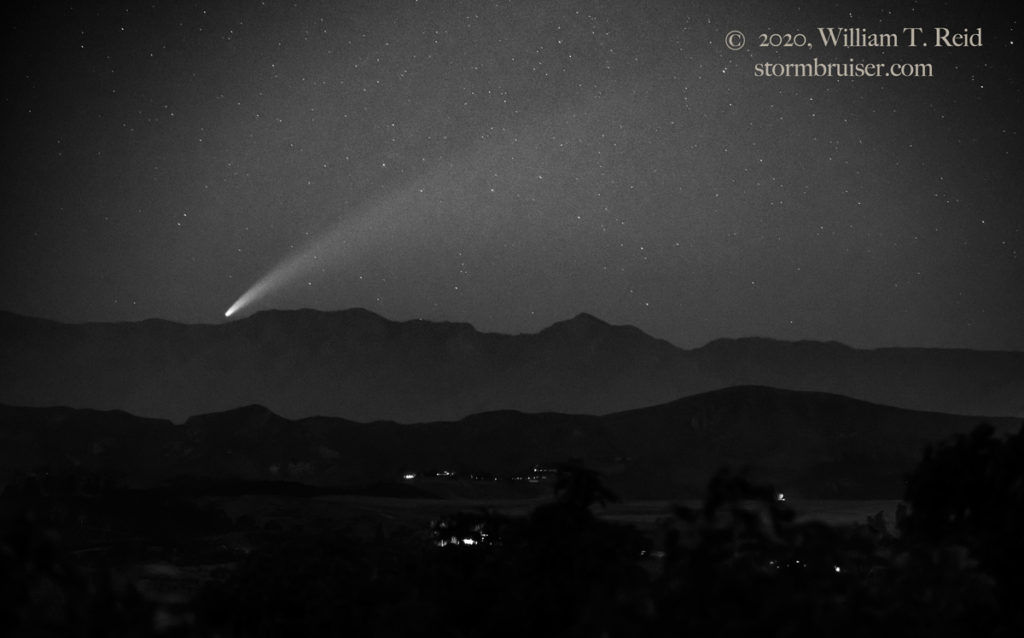
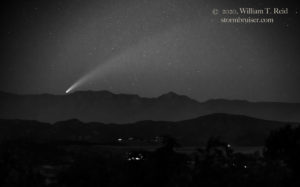
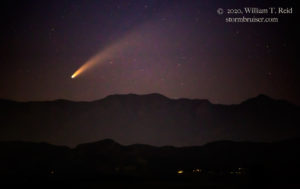
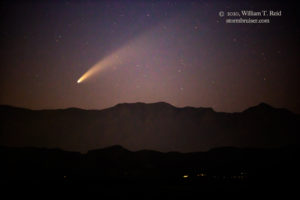
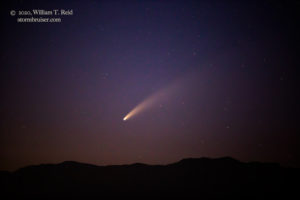
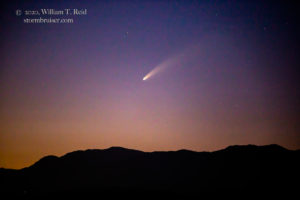
Leave a Reply
You must be logged in to post a comment.